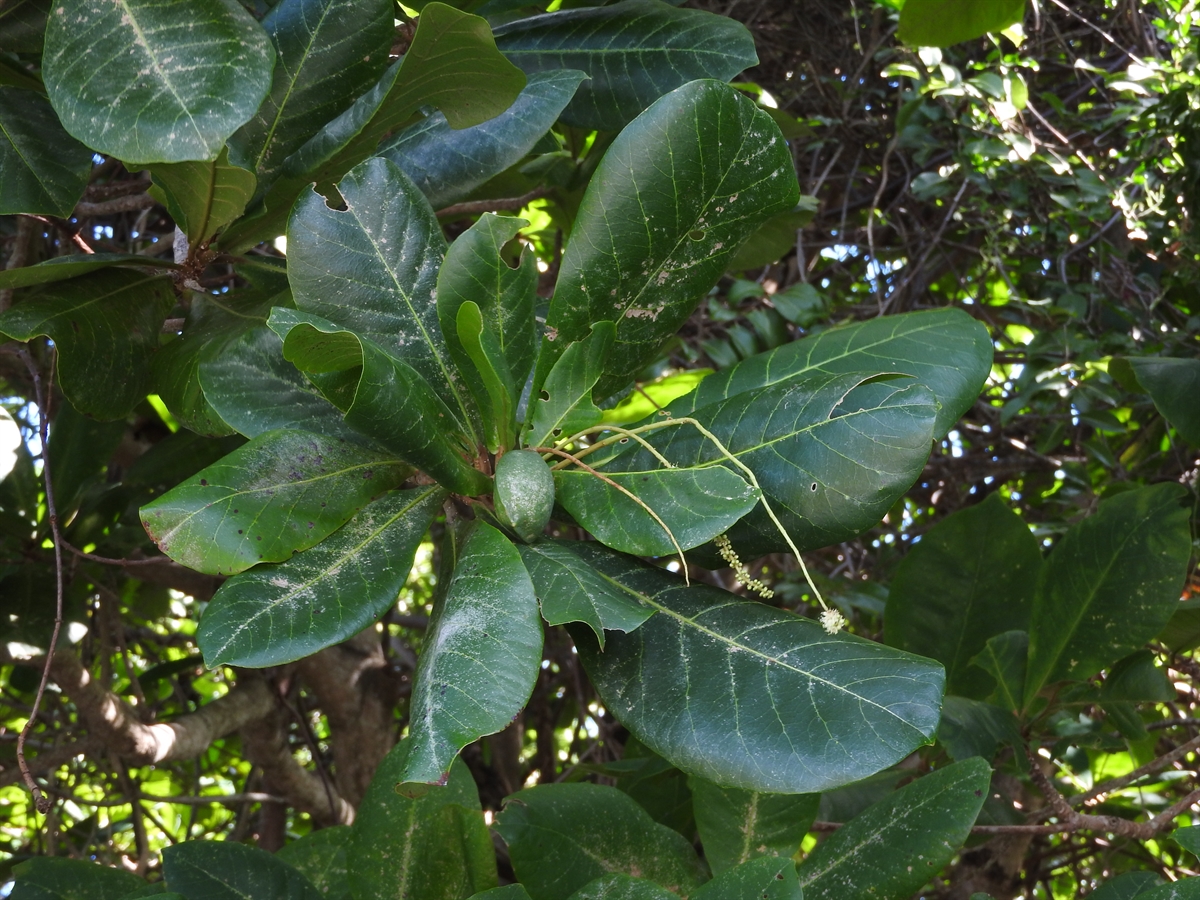Habit: Terminalia catappa a tree up to 25 meters in height and a trunk to 1.5 meters. The s leaves are arranged alternately, to 25 centimeters in length, ovate to oblong, with an entire leaf margin. The leaves are clustered at the ends of short branches each of which separated by 10-15 centimeters.
There are both incomplete – imperfect, and incomplete – perfect, actinomorphic flowers that are arranged in many flowered spikes. The staminate flowers are towards the apex and the complete flowers at the base of the spike. The staminate flowers have 5 unfused, greenish white sepals, no petals, 10 stamens and no carpel. The hermaphroditic flowers have 5 unfused greenish white sepals, no petals, 10 stamens and a single carpel. The fruit is a drupe at maturity.
Habitat: Terminalia catappa grows inhuman Altered environments including yards, roadsides, abandoned fields and the edges of Fresh Water Wetlands.
Distribution: Terminalia catappa native range is not currently known as it spread early in human history due to its edible fruits and fast growing trees. It is throughout the Asian, African, Australian tropics and has become widely distributed in tropical and subtropical regions of the Western Hemisphere. In Human Altered environments, it can become a monoculture and spread in to natural areas including Fresh Water Wetlands.
Medicinal/Cultural/Economic usage: Terminalia catappa has been used to treat eye problems in the Lucayan Archipelago. The seed is edible.

